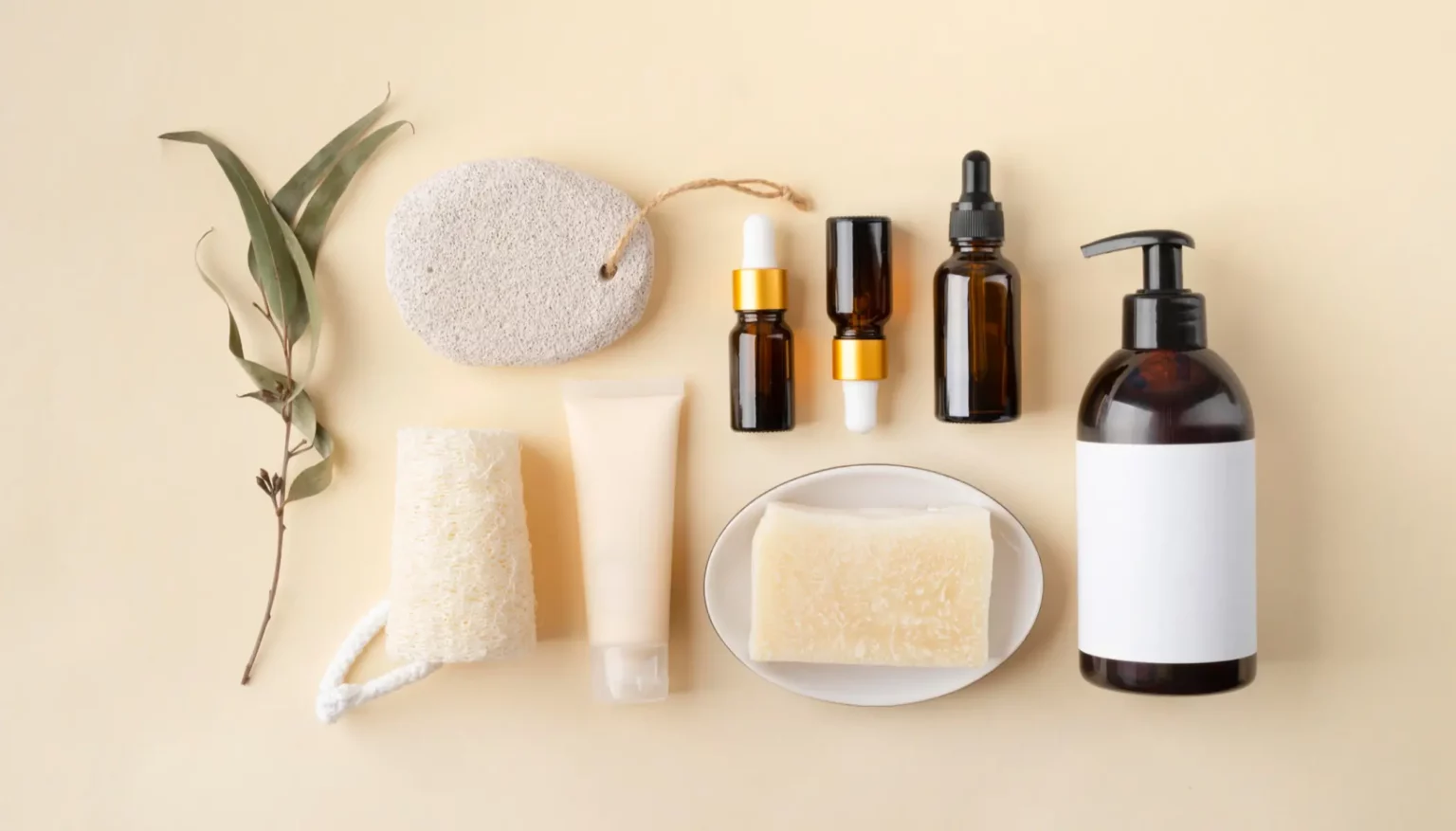Product photography requires two qualities above all: skill and creativity. Effective product photography tips need to be tailored to both your target audience and your brand. They play an important role in attracting potential customers and increasing sales. However, taking great product photos requires some skills and knowledge that not everyone has.
From proper lighting to choosing the right background, we cover all aspects of product photography that can be critical to your business success. By following our guidelines, you’ll be well on your way to creating visually appealing images that highlight the unique features and benefits of your products. Are you finding it harder than ever to come up with product photography ideas? Don’t worry, we’ve got you covered!
1. Stabilize your shot
If you want to achieve the highest level of professionalism with your product photography, your images must be stable. Even the slightest blur can have a negative impact on your photos, as the viewer will quickly notice it. For this reason, we recommend that you invest some money in a high-quality tripod. Manfrotto tripods are some of the most sought-after on the market, so give them a try.
2. Use the proper lighting
Choosing the right lighting can take your product photography ideas quite a bit further. Lighting should be at the top of your priority list, and there are a few aspects to consider. The best light is by far natural, and we recommend you wait for the golden hour. You should also supplement the natural light with other artificial lighting devices, such as a softbox or diffusion plates.
3. The best backdrops for your product
When it comes to deciding what background you need, you must first consider the style you want to implement. We have divided the most commonly used e-commerce styles into catalog, minimalist, simple props, and custom, and each has its purpose. For example, the catalog style requires the use of a white background, while the simple props style requires more attention and complicated backgrounds. To learn more about how to perfect each style, browse through our complete guide to e-commerce product photography.
4. Level up your gear
The camera and lens you use have a critical impact on your image results. For cameras, we recommend a good DSLR from brands like Canon or Nikon. On the other hand, lenses can have a decisive influence on an image. So invest your money wisely in a macro lens or a fixed focal length lens. And if you are on a tight budget, you can buy used equipment that works at a lower price.
5. Retouch your images the right way
Retouching is the key to making your product images look flawless. To effectively edit your images, you need the right software for the different situations you might find yourself in. For example, for editing a few images, high-precision tools such as Adobe Photoshop are suitable. A large number of images is another matter entirely, and there are specialized tools for that. We recommend Adobe Lightroom and Capture One, since they give you the best results when you need to edit numerous images in a short time.
6. The cleaner the product, the smoother the image
You can learn about lighting and composition techniques all day long. However, if the subject you are photographing is not at its best, the image will turn out less attractive than usual. Pay close attention to the condition of your product and make it interesting for e-commerce even before you photograph it.
7. Adding value through props
Do you know the best product photography tip to keep your viewers constantly engaged? You guessed it right, it’s product photography props. But what exactly do these elements bring to the table? First, they help you promote your brand image. You can do this in several ways, so think carefully about which props best represent your business. They also strengthen your bond with your target audience by including items that resonate and appeal to people. We have written an article on choosing the right props for your business that you should definitely take a look at it.
8. Set the ideal scene
It is crucial to design a scene that fits and complements your product. You need to pay attention to where and how you position your product to capture it perfectly. Use symmetry, lines (leading or diagonal), and negative space to create the ideal space to capture your product.
9. Testing is key
Through testing, you can develop a more complete understanding of how product photography really works. But why should you test and experiment with your product photos? Isn’t it just a waste of time? Contrary to popular belief, testing is an important part of product photography. It helps you improve the consistency of your image quality without having to change anything.
10. All eyes on your product
It goes without saying that your product must be at the center of your image. You can consider it to be the “star” of the photo. By making the product the center of attention, you can easily turn its features into benefits, increasing your chances of closing a sale. To achieve this, you should use a shallow depth of field to blur the background.
11. Play around with angles
Using angles is a great way to add versatility to your product photography. Have you ever found yourself in a state of low creativity? Angles are the solution because they give you the opportunity to photograph the same object from different angles. By taking this product photography tip to heart, you can highlight different features of your product – all in the same space. With traditional product photography, the possible shooting angles are quite limited, and there are better alternatives to showcase each product feature. Click here to learn which groundbreaking alternative can greatly improve your product photos.
12. Understanding where you will market your product
These days, you can place your promotional materials almost anywhere. Social media, websites, print media, you name it. But how can you customize your images for each platform? Shoot in a high-resolution format to ensure the photos can be used in any media you choose.
13. Understanding the type of photography you need
Different types of products are best photographed with different photo styles. Organic products, for example, are perfect for traditional studio photography. Lifestyle products like clothing or food are simply better photographed with a traditional camera in a studio setting.
On the other hand, if you sell hard surface products like perfumes, cosmetics, watches or jewelry, CGI may be the best idea for product photography. With 3D modeling software, you can create reality effortlessly, faster, and more cost-effectively than with other traditional alternatives. Learn more about how you can successfully benefit from CGI.
14. Keep your target audience in mind
One of our most important tips for product photography is to always remember who you’re taking these product pictures for. Your target audience should be the first thing on your mind because they’ll greatly influence the background, props, and composition. Be sure to do your research because you want to put yourself in your target audience’s shoes and make decisions that will appeal to them and appeal to them.
15. Showcase the values of your business
Before they decide to buy your products, people often try to connect with your brand. We all do this subconsciously in one way or another, and you have the opportunity to convey strong feelings of trust through your imagery. You can use props, lighting or other means to get the viewer used to your product. For more information on how to effectively use props to showcase your brand’s values, read our in-depth blog post here.
Final thoughts: what did you learn today?
Product photography is a crucial aspect of any successful e-commerce business. The way you present your products has a big impact on sales. In this article, we’ve compiled 15 product photography tips to help you capture high-quality images that will attract potential customers and increase sales.
It’s important to invest in quality equipment, such as a camera, tripod, lighting, and lenses. Choosing the right background and props can make all the difference when it comes to showcasing your product and making it attractive. Furthermore, shooting from different angles can make the product stand out more. With the appropriate editing software, you can also enhance the images by adjusting brightness or removing imperfections.
If you want to apply these tips in a faster and cheaper photography environment, use CGI. You’ll do all the work in a computer software without having to invest in expensive equipment and props. To learn how to use 3D product photography effectively, have a look at our battle-proven CGI Basics Masterclass.
If, however, you want to spend your time on improving other aspects of your business, you can schedule a discussion with us about what we can do for you here – FREE, no strings attached. Reality can be whatever you want it to, so start working towards your dreams now.
FAQ
What are some common mistakes to avoid in product photography?
Common mistakes to avoid in product photography include using poor lighting and the wrong background and editing software.
How do I choose the right background for product photography?
The right background for product photography depends on where you want to use the images. For example, catalog images are usually shot against a white backdrop, whereas social media posts require more detailed scenery.
What are some tips for product photography?
Some tips for product photography include effectively using a DSLR camera, natural lighting, a tripod, and many more. Tune into this article to find out more about how you can take your product photography one step further.



